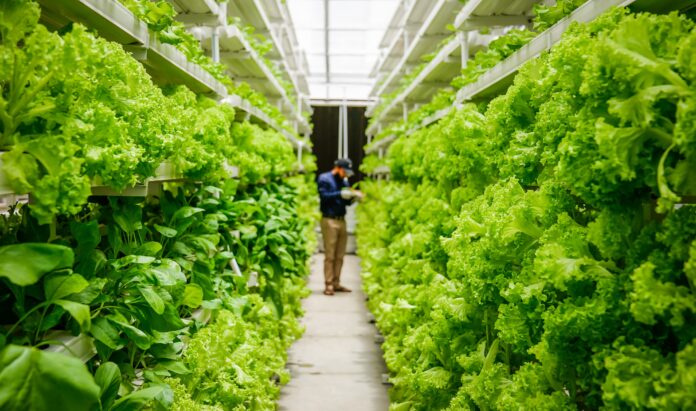Vertical Farming: The Future of Agriculture
Growing crops vertically in multiple layers is known as “Vertical Farming”. Dickson Despommier, a professor of public and environmental health at Columbia University, was the first to propose the current concept of “vertical farming” in 1999. Soilless farming techniques like hydroponics, aeroponics, and aquaponics, as well as controlled-environment farming, which tries to optimize the growth of plants, have been used in vertical farming.
Hunger, malnutrition, food scarcity, declining productivity, and rising food prices are issues that developing nations like Nepal are dealing with on a daily basis. These issues are a reflection of underlying trends that are failing traditional agriculture, and Nepal’s frustrating conventional farming system is the reason why young people are being forced to work abroad. According to a study on the reduction of agricultural land in Pokhara, the urban area had a coverage of 6.33% in 1977 but had grown to 51.42% by 2010, while cultivated land had fallen from 60.73% to 20.27% over the same time period. In the Terai area and other cities of Nepal, the trend of declining arable land and increasing urban expansion is evident (Rimal et al., 2018). So, the technology-driven agriculture paradigm known as “vertical farming” may provide a way to address issues like food security and sustainable productivity. It is a system for producing food in vertically stacked layers where all environmental factors—light, temperature, pressure, humidity, and gasses—can be regulated using modern indoor farming methods and controlled environment agriculture technology.
The world of the vertical farm is one in which every community has a local food source that is produced in the safest manner possible, where not a single drop of water or speck of light is wasted, and where a short elevator ride may take us to a natural grocery store. Fresh vegetable production could undergo a revolution thanks to vertical farming. It is possible to guarantee the level and quality of production, regardless of the weather and climate, by growing crops in multiple layers in a controlled environment.
Vertical farming can be used to cultivate fruits and vegetables with great value and potential for quick growth, such as lettuce, strawberries, leafy greens, and cucumbers. Intensive indoor farming is expensive to start up and has significant energy expenses; however, recent improvements in LED efficiency and cheaper LED production prices have started to make vertical farms more affordable.
Vertical farming methods have several benefits, but the major one is the higher crop production that comes with a smaller unit area of land requirement. Also, we can accomplish sustainable, effective, and completely controlled farming by growing crops in multiple layers. With less disease, insect infestation, and need for pesticides and herbicides, over 8–10 times more crop output can be achieved through current implementations of vertical farming when combined with other technology, such as specialized LED lights, hydroponics, aeroponics, and aquaponics. With closed-loop water recycling and LED lighting in place of sunlight, plants are grown entirely indoors. Since the indoor environment is already bug-free, there is no need for pesticides, and plants can be cultivated in such sterile conditions that there is no need to wash them before consumption.
The primary disadvantages of vertical farming are the high cost of initial setup and the limited variety of crops that may be produced there. Vertical farming, however, would be the best choice given the limited access to land in the near future. With less disease, insect infestation, and the need for pesticides and herbicides, it might make use of current techniques like fertigation, organic farming, and soilless cultures like hydroponics, aeroponics, and aquaponics. In addition to having higher startup costs than typical farms, vertical farming systems also have higher energy needs since they utilize additional lighting like LEDs. Additionally, if non-renewable energy sources are employed to meet these energy needs, vertical farms may pollute the environment more than conventional farms or greenhouses.
Research needs to be focused on a detailed analysis of the economics and requirements of vertical farming.

